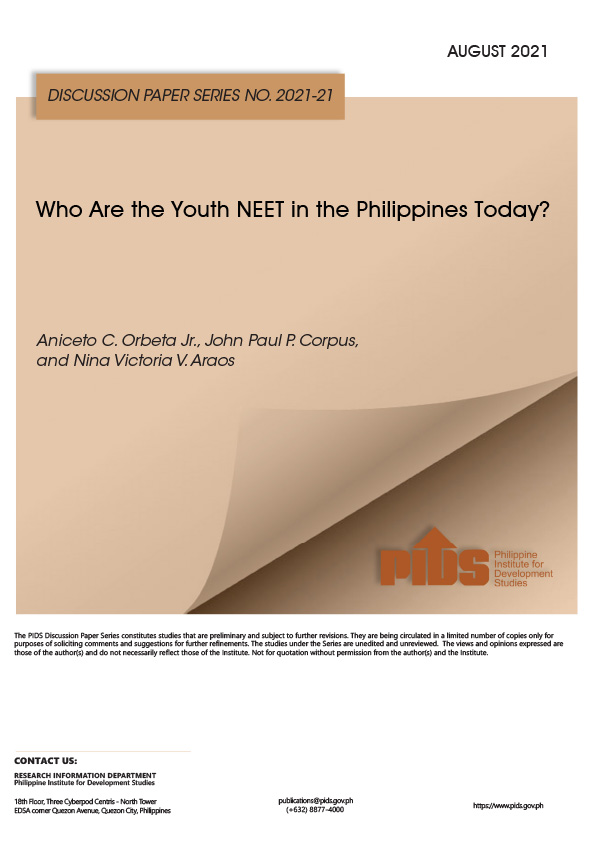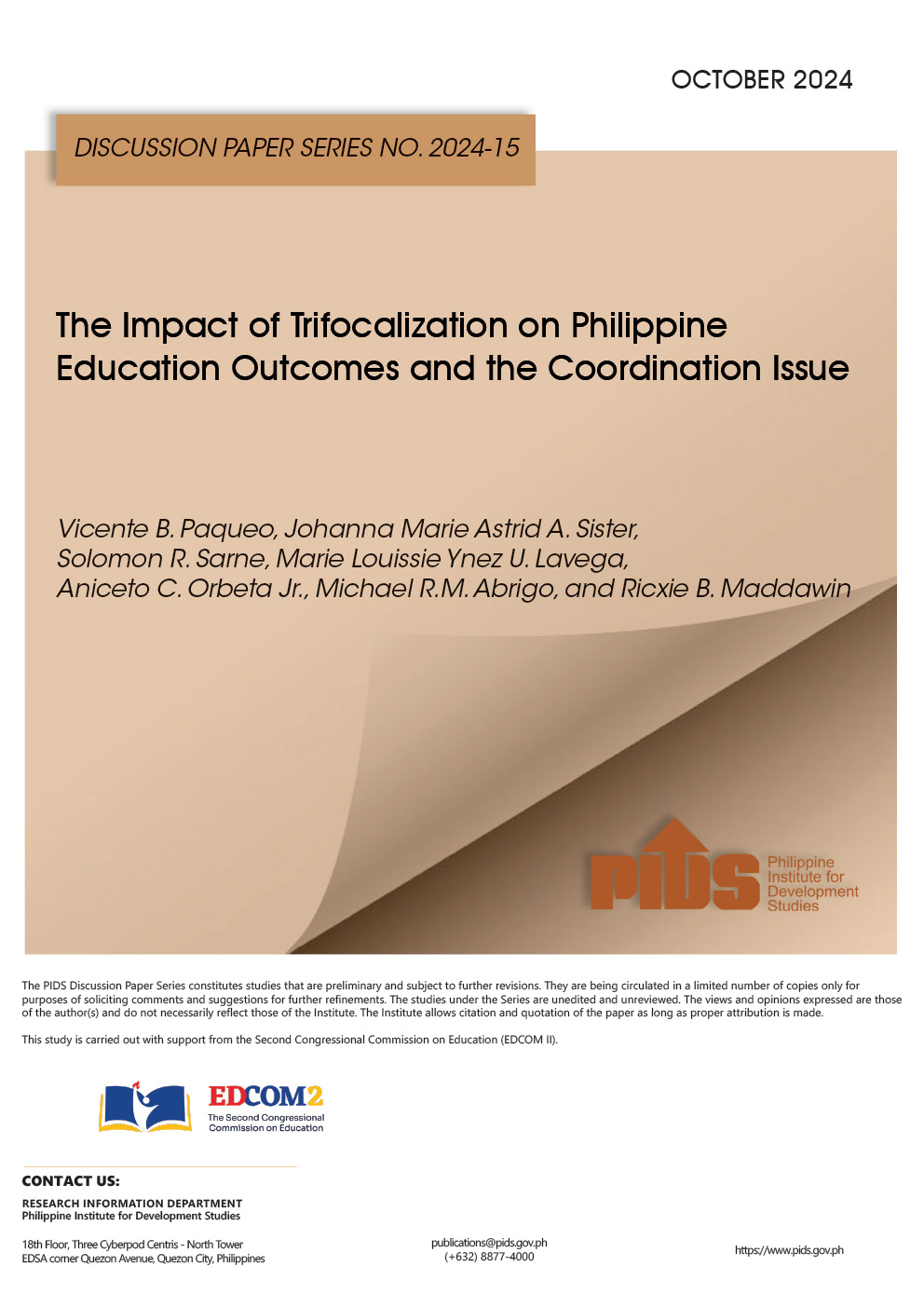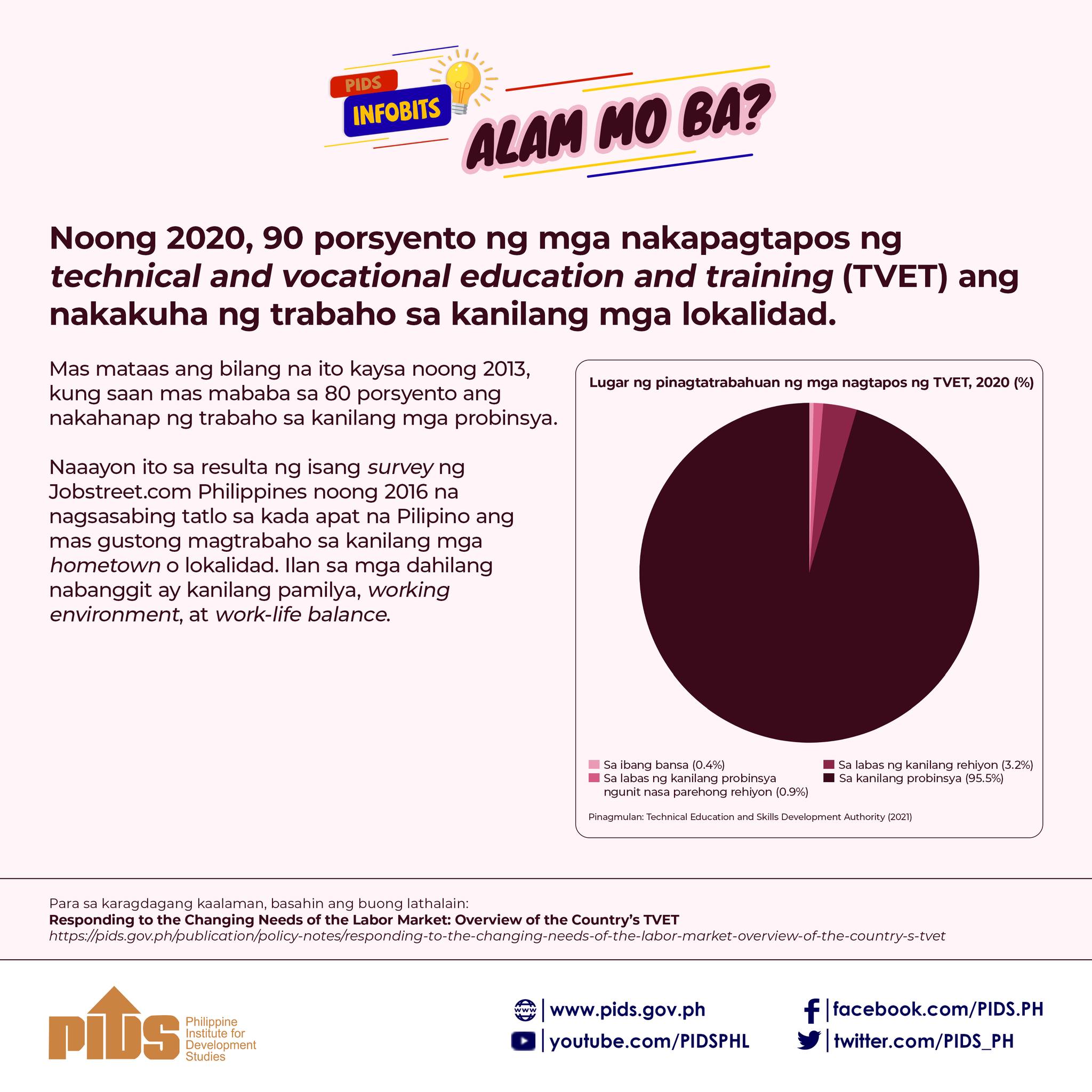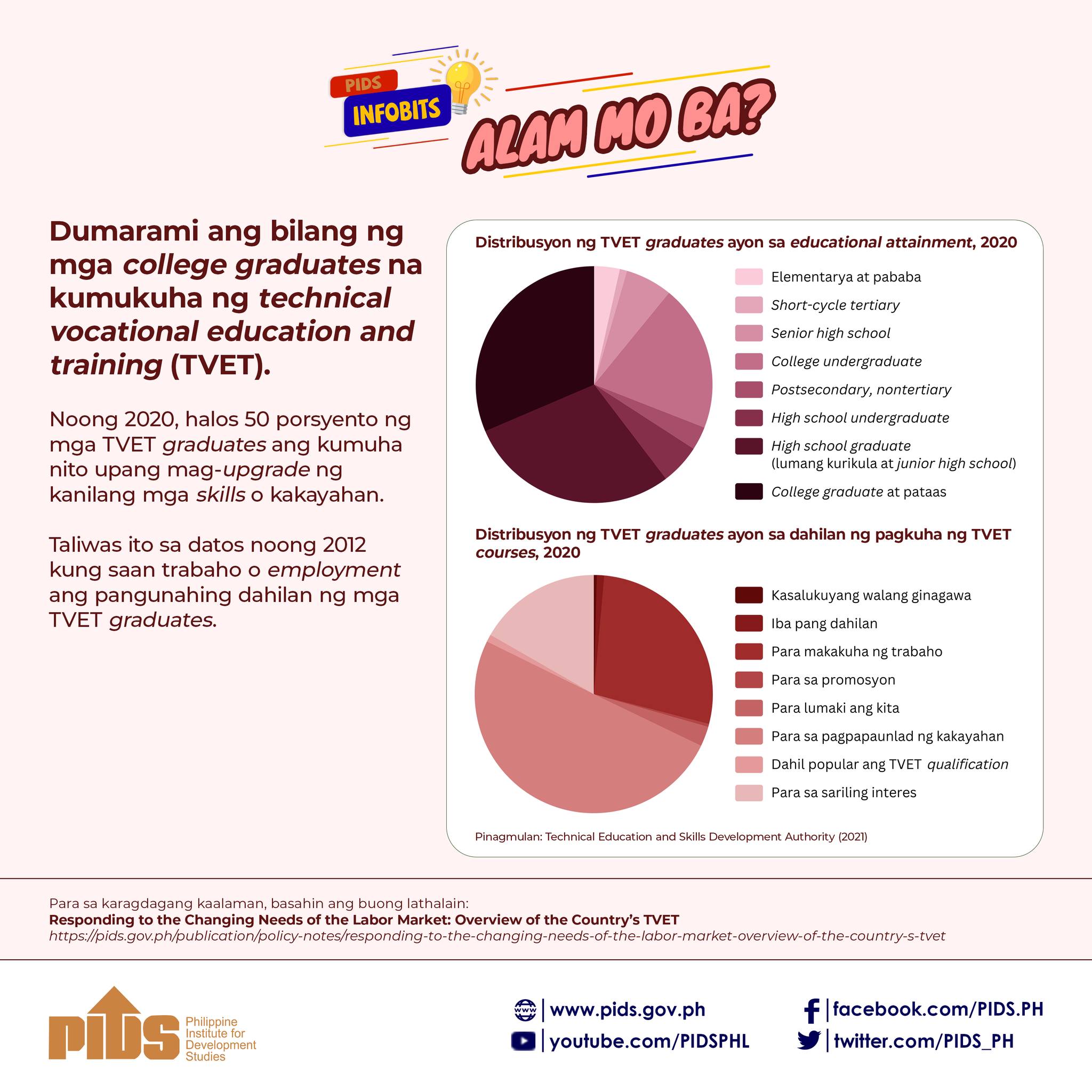Being not in employment, education, or training (NEET) can undermine young people’s future employment and earnings prospects, leading to lasting economic disadvantage. Being NEET can also have adverse social consequences, such as depression, weaker social engagement, and possibly deviant behavior. These outcomes come at a great cost to the economy and society. This study aims to address four research questions: (1) what are the dropout points of learners across the education continuum; (2) how are NEET computed and monitored across government agencies; (3) how many NEET are potential TVET learners; (4) what barriers do NEET face in pursuing further training. The study used a range of research strategies, such as document review, primary and secondary data analysis, and in-depth interviews with national government offices with programs for youth. The study finds that NEET is still an emerging concept in the Philippines. However, given the large number of youth NEET in the Philippines, and the social and economic implications of this, more attention needs to be directed toward youth NEET and the issues faced by this cohort. First, there is a need to adopt a standard definition of NEET and promote the concept as an important cohort that needs attention from government and nongovernment programs. Second, there should be more comprehensive coverage of people in technical and vocational education and training (TVET) in official statistics to understand the demand for TVET better. Resolving issues in the definition of training participation in official statistics would provide a more comprehensive picture of TVET participation and lead to a more accurate measurement of NEET in the country. Third, more in-depth studies should be conducted to identify other important determinants of being NEET. This will help find effective levers of drawing out the NEET into either learning a trade and/or being productively employed. Fourth, given the high proportion of inactivity among female youth observed, further inquiry into the reasons behind this is recommended. Fifth, the study estimated that only one in four NEETs would demand TVET training. Given this low potential take-up rate, there is scope for promoting TVET among the NEET. Lastly, government and other key stakeholders should address the barriers and challenges of those desiring and who are currently in TVET training. This includes addressing participants' financial constraints through re-examining existing allowance benefits, the conduct of better information dissemination on training opportunities, provision of labor market information and employment facilitation, and consideration of solutions to connectivity and digital device issues experienced by trainees.
Comments to this paper are welcome within 60 days from the date of posting. Email publications@mail.pids.gov.ph.
Citations
This publication has been cited 5 times
- Angela Celis . 2022. Money woes tagged as barrier to TVET. Malaya.
- BusinessMirror. 2021. PIDS study cites NEET youth’s hindrance to vocational training. Business Mirror.
- Ordinario, Cai. 2022. Pricey training hobbles Pinoy youths’ aspiration to improve digital skill sets. BusinessMirror.
- Perez, Arra. 2022. Ilang kompanya may libreng training sa SHS graduates, out-of-school youth. ABS CBN.
- Rizal Raoul Reyes . 2022. No money, more learning problems? PIDS’ recent study says it is so. BusinessMirror.













